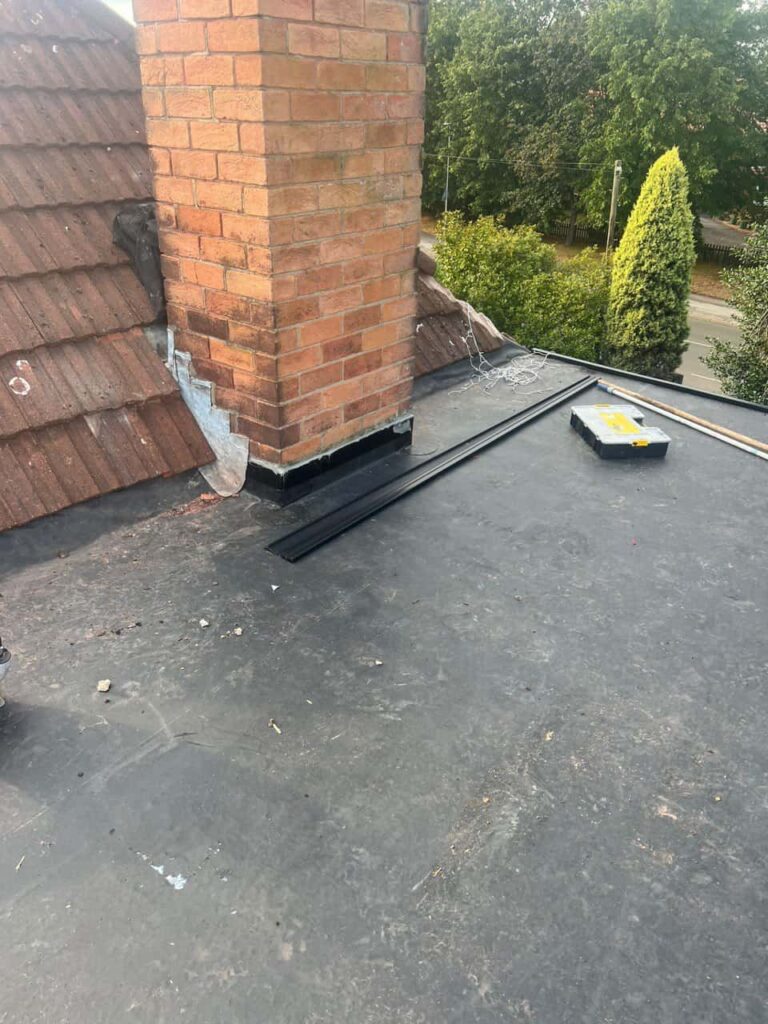Introduction: Any homeowner can experience a roofing emergency, which can be stressful and challenging. Prompt action is crucial to minimise damage to your home, whether due to storm damage, fallen branches, or sudden leaks. At Lutterworth Roofing Repairs, we understand the importance of protecting your home during emergencies. Here are some practical steps to safeguard your property while awaiting professional roof repairs.
1. Assess the Damage Safely
Purpose: Ensuring your safety while evaluating the extent of the damage.
Steps:
- If the damage is severe, such as a large hole or multiple leaks, avoid entering the affected area to prevent injury.
- Use a pair of binoculars to inspect the roof from the ground.
- Take note of visible damage, such as missing shingles, exposed underlayment, or fallen debris.
Tip: If it’s safe, take photos of the damage for insurance. This documentation can be valuable when filing a claim.
2. Contain Water Leaks
Purpose: Preventing water damage to the interior of your home.
Materials Needed: Buckets, towels, plastic sheeting.
Steps:
- Place buckets or containers under the leak to catch dripping water.
- Use towels to absorb water on the floor and prevent it from spreading.
- Cover furniture and valuables with plastic sheeting to protect them from water damage.
Tip: Regularly empty the buckets and replace wet towels to keep the area dry.
3. Cover the Roof Temporarily
Purpose: Provide a temporary barrier to prevent further water ingress.
Materials Needed: Heavy-duty tarp, roofing nails, ropes or bungee cords.
Steps:
- If it’s safe to access the roof, cover the damaged area with a heavy-duty tarp.
- Ensure the tarp extends beyond the damage by at least a few feet on all sides.
- Secure the tarp with roofing nails at the edges and use ropes or bungee cords to keep it in place.
Tip: Enlist the help of a family member or neighbour to ensure the tarp is securely fastened.
4. Clear Debris
Purpose: Preventing additional damage and ensuring safety.
Materials Needed: Work gloves, rake, broom.
Steps:
- Remove fallen branches, leaves, or other debris from the roof and surrounding area.
- Clear gutters and downspouts to ensure proper drainage.
Tip: Wear work gloves to protect your hands from sharp or rough debris.
5. Ventilate the Area
Purpose: Reducing moisture and preventing mould growth.
Materials Needed: Fans, dehumidifier.
Steps:
- Open windows and doors to allow fresh air to circulate.
- Use fans to help dry out damp areas.
- If possible, use a dehumidifier to remove excess moisture from the air.
Tip: Monitor the weather forecast and close windows if rain is expected.
6. Protect Electrical Systems
Purpose: Preventing electrical hazards and damage.
Materials Needed: Plastic sheeting, duct tape.
Steps:
- Turn off the electricity in the affected area to avoid electrical shocks or fires.
- Cover exposed electrical outlets and fixtures with plastic sheeting and secure them with duct tape.
Tip: If water is near electrical systems, do not attempt to address it yourself. Call a professional electrician.
7. Contact a Professional Roofing Service
Purpose: Ensuring a thorough and safe repair.
Steps:
- Contact Lutterworth Roofing Repairs immediately to schedule an emergency repair.
- Provide detailed information about the damage and any temporary measures you have taken.
Tip: Keep our contact information handy for quick access in future emergencies.
Conclusion: Protecting your home during an emergency roof repair involves quick thinking and decisive action. Following these steps can minimise damage and ensure your home remains safe until professional help arrives.
Call us on: 01455 242 599
Click here to find out more about Lutterworth Roofing Repairs
Click here to complete our contact form and see how we can help you with your roofing needs.

